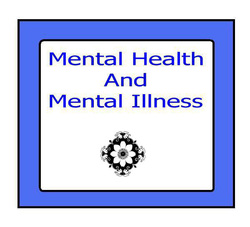
Obsessive-Compulsive Disorder, OCD, like other mental illnesses occurs on a continuum, or in layers of complexity. It is based on anxiety that underlies irrational fears and concerns than can only be discharged by carrying out a ritual of activities. We can think of OCD as a two-part problem; the thought or irrational concern is the Obsession, and the implementation of the ritual is the Compulsion. For example, someone may have an unreasonable fear of germs, an obsession, and to make themselves feel better, they wash their hands multiple times, the compulsive ritual.
To some degree OCD is common for many people but it is not a problem that is debilitating. A good case can be made that superstition is based to some degree on this disorder. If there is a concern that walking under a ladder can be disastrous to ones well being, then avoiding walking under one will "protect" the believer. For this type of irrational concern, walking around the ladder will stop something bad from happening. If you ask what may happen if they do not comply, they simply cannot provide a rational answer. But, this suggests some type of learned behavior that provokes compliance.
Numbers also play a large part in the lives of many people. Whether it is a lucky number, or a number to be avoided, numbers have a strong yet unreasonable power in some otherwise rational individuals. Another example of an illness with anxiety as a base is hoarding. The inability to discard even useless items satisfies the anxious individual as having OCD. The following short vignette illustrates the extreme level to which OCD can be seen:
Tom was a male in his mid 40's and lived in a rural area with his parents. He cannot remember a time when life was not controlled by irrational concerns and fears. His life was consumed with numbers and the absolute need to follow a well-learned behavior pattern. When he went through a doorway, he had to enter and return exactly 13 times and if he lost count, he would have to repeat the process. He drank water and when he opened his container, he would have to tap the lid 13 times and then drink 3 times before closing the bottle. His medication was taken at exactly 30 minute intervals with the water ritual. The illness was so pervasive that he had to control his body as well. He was only "allowed" a bowel movement every three days. When challenged to explain any of his patterns he could only say that if he did not follow the ritual, something bad would happen.
Despite the incredible demands of his illness, Tom felt that his life was normal. The thoughts that I had when visiting him were that even with a large number of medications and therapy, his OCD never improved. OCD and brain activity is being investigated as well as the learned behavior and with time, I hope to see Tom gain some control over his own destiny.
To some degree OCD is common for many people but it is not a problem that is debilitating. A good case can be made that superstition is based to some degree on this disorder. If there is a concern that walking under a ladder can be disastrous to ones well being, then avoiding walking under one will "protect" the believer. For this type of irrational concern, walking around the ladder will stop something bad from happening. If you ask what may happen if they do not comply, they simply cannot provide a rational answer. But, this suggests some type of learned behavior that provokes compliance.
Numbers also play a large part in the lives of many people. Whether it is a lucky number, or a number to be avoided, numbers have a strong yet unreasonable power in some otherwise rational individuals. Another example of an illness with anxiety as a base is hoarding. The inability to discard even useless items satisfies the anxious individual as having OCD. The following short vignette illustrates the extreme level to which OCD can be seen:
Tom was a male in his mid 40's and lived in a rural area with his parents. He cannot remember a time when life was not controlled by irrational concerns and fears. His life was consumed with numbers and the absolute need to follow a well-learned behavior pattern. When he went through a doorway, he had to enter and return exactly 13 times and if he lost count, he would have to repeat the process. He drank water and when he opened his container, he would have to tap the lid 13 times and then drink 3 times before closing the bottle. His medication was taken at exactly 30 minute intervals with the water ritual. The illness was so pervasive that he had to control his body as well. He was only "allowed" a bowel movement every three days. When challenged to explain any of his patterns he could only say that if he did not follow the ritual, something bad would happen.
Despite the incredible demands of his illness, Tom felt that his life was normal. The thoughts that I had when visiting him were that even with a large number of medications and therapy, his OCD never improved. OCD and brain activity is being investigated as well as the learned behavior and with time, I hope to see Tom gain some control over his own destiny.





















